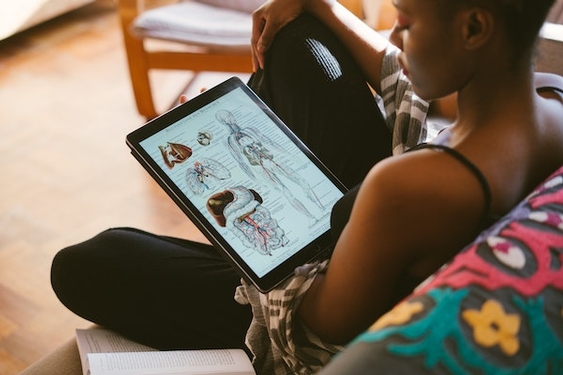Anatomy is the science that describes different organs in a body, and physiology maps the various functions of the organ. Knowing where the heart is located is an anatomical skill, and understanding how the heart functions are the physiological aspect.
Together these two courses help in clearing the basic concepts for future courses that will be part of medical and nursing programs. The understanding of anatomy and associated physiology will shape the understanding and development of skill sets of future doctors
Importance of human anatomy courses
A human anatomy course is important for every profession that deals with clinical aspects of patient care including therapy. In case of emergencies and bedside treatment, healthcare professionals rely on their knowledge and expertise in anatomy and physiology. One can understand the prognosis of the treatment plan and evaluate the next course of action only if their foundation in anatomy is strong.
How can anatomy help in licensure exams?
When a learner is preparing for the USMLE or NCLEX exam they need to know varying degrees of clinical anatomy as per their program curriculum level.
This subject may not be direct in most categories. However, its knowledge offers the base for the rest of the topics indirectly. Strengthening one’s understanding of anatomy is necessary to build a strong foundation for clinical courses. Many tools and resources are used in silo or combination for achieving a consistent level of core competency in this coursework. However, using all the available resources can both drain expenses and prove to be futile as time may not be sufficient to use every available tool.
The following points discuss some of the popular and relevant resources that help a learner in mastering anatomy concepts that can prove to be useful:
Edtech platforms and free online courses
There is a rise in Edtech platforms that are using AI-powered tools such as chatbots for interactive discussions on all topics, interesting explanatory videos, and 3D animation models of all the organs with their anterior and posterior pictures for better comprehension.
With spaced repetitions offered in online courses, memorizing difficult topics will be a smooth process. Apart from the courses with good reviews, there are free sources available on Youtube. Take a reference from other students of the study group you are a part of. Most of the time others might have found some great links or channels from free and open sources that can prove to be purposeful. It will save you time, and you can start your preparation as soon as you get a review from a friend. A simple google search can also yield the top-rated channels that teach human clinical anatomy as preparatory coursework.
Books
Apart from the course books, there are additional resources that help with the sequence of the topic, flashcards, and review points. Netter’s atlas of human anatomy and Gray anatomy are popular choices as they have numerous explanatory drawings and images. These books can be bought by friends of the same study group and shared. In this manner, the expenses related to books, and stationery can be reduced, yet the outcome is positive.
All the important points like bones, joints, muscles, nerves, and other clinical anatomy topics are covered exhaustively in these books. With test mode practice tests the relevant books are always a preferred choice of medical program students.
Anatomy replica tools
Toy models of anatomy replica tools with a cross-sectional view of the anterior part are used even in physicians' offices to explain to their patients about any ailment or problem. These objects have been used for decades and help learners understand the clinical aspect easily as it is the 3D model of the diagram they see in the anatomy textbooks
Models are specifically used to study the musculoskeletal system where a 3D model replica represents the bones and muscular structure of the human body.
Cadavers
Human cadavers are the oldest resources and are still a good way to learn human anatomy in a lab environment. It is the closest one can get to feeling the skin and structure of the human body before actually passing out and clearing the licensure exams to become a doctor. Unlike 3D models or diagrams, cadavers portray the complete image perfectly. Other sources are close but not as complete in structure as the real human body. So, if your university has the facility for a cadaver lab, make complete use of it.
Live human body
The superficial anatomy that does not need a scalpel to be recognized can be studied using either your own body or that of a volunteer student. Observing your palms, or facial and other superficial organs like muscles in the limbs of your opponent can be both interesting and an easy way to learn during group studies. It also helps in observing the diversity in appearance between different ethnicities and observing the difference in drug reactions between different diasporas of people.
Practice tests
Tests prompt one to read the points thoroughly, so that one can assess their ability through practice. In the course of practice tests often students find a few topics that have been either omitted or missed during preparatory classes or study hours. By highlighting missed points and the mistakes committed, a student can take corrective measures. There will be enough time to prepare for the leftover topics if the practice test is taken in advance.
Conclusion:
Anatomy and physiology must be important foundation courses for clinical studies. Since the human body is a host of amazement, inevitably, human anatomy is also interesting. However, the topics are many, and it will be difficult to memorize the concepts if there is a lack of discipline and dedication. Using the right resources will help in memorizing the concepts. But the strategy and the focus of the student are equally important. So take some time to go through all the relevant tools and stick to a plan to achieve the goal to master human anatomy.




